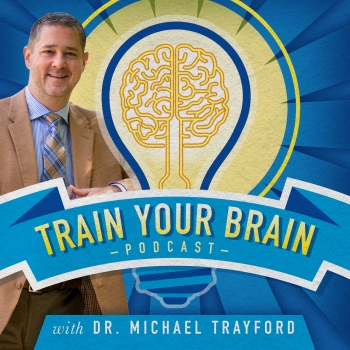Podcast: Play in new window | Download
Good morning and welcome to Episode 72 of the Train Your Brain Podcast with Dr. Michael Trayford. Every Monday we produce a 30-minute episode. Tuesday through Sunday we produce episodes with five-minute tips. Every episode of the Train Your Brain Podcast features a tip, so you can receive pointers 365 days a year that will help enhance the performance of your brain!
This morning Dr. Trayford shares tip number 72. This tip is specifically for those who experience anxiety. When you feel yourself begin to panic, you may begin shallow, rapid breathing. This flood of oxygen disrupts the PH balance in your body. By breathing into a brown paper bag you will actually restore the balance of carbon dioxide and be able to stabilize your own breathing in just five minutes. Listen to learn exactly how this self-treatment works and how to do it right.
Jason: I was just wondering what bag breathing is.
This is topic where you have to exercise a work with a certain amount of caution, because this tip is primarily aimed at people who suffer from anxiety. What happens is a pretty complex process of pH in the body. People using hear these terms with their pool or maybe the soil in their garden, but it’s also important in the body.
If your pH isn’t balanced you’re going to have problems. What happens with people suffering from anxiety is that they tend to breathe faster than the average person. They breathe very fast and shallow. What happens is that these people in these states are breathing off too much carbon dioxide and they develop a condition known as Hyperoxia. They end up with too much oxygen in the blood stream. They end up with respiratory alkalosis, which just simply means the body has developed a high pH.
Nerve cells do not like high pH and bad things start to happen. One of the initial problems for a person having a panic attack is numbness and tingling in the lips, face and nose. Sometimes they can even get a little bit of a purple color in their limbs.
Thoughts become distorted; they’re not having the balance of oxygen and carbon dioxide.
The benefits of bag breathing are two-fold. First off it resets the breathing pattern. Then it gets more carbon dioxide back into the body to start to rebalance the pH so the nerve cells are no longer distressed.
I’ve always said that the brown paper lunch bag is the best and cheapest neurological treatment tool ever invented.
I don’t use it for lunch I always use it for getting people to breath better.
The lunch bag is the perfect size. With a single full breath you should be able to fill up that lunch bag. When someone is breathing shallow, they can’t fill the bag.
It starts to fill up the bag with carbon dioxide, which sets up a reaction in the brain stem that results in a yawning response. Which essentially forces the body to take a deep breath.
Often times within two to three minutes, people experiencing anxiety can reset their pH and hopefully not go into a hyperventilation episode that makes them pass out. So this is a really interesting topic that we’ve used very successfully in clinical practice.
If you have these types of problems you should talk to your physician and who is well versed in functional neurology.
As an exercise you breathe into the bag for a full minute, then you remove the bag from your face and attempt to breathe normally. You continue doing this for up to five minutes. What that does is give the brain time to reset your breathing patterns.
You should find through the course of the exercise that your breathing is getting a little deeper and more relaxed. If it normalizes faster than five minutes, you can stop. You should not do this longer than five minutes.
You should discuss this treatment with a physician before starting this practice as a means to manage anxiety or panic attacks.
If you have any concerns regarding the information and applications discussed in this podcast, please consult your physician and a doctor who is experienced in functional neurology. Michael Trayford DC, DACNB is available for consultation by calling (828) 708-5274. Thanks for listening.
Links for this episode:
Click here to learn more about helmets
Learn more at APEX Brain Centers.com
Read the APEX Brain Centers BLOG
Follow us on Facebook
On Google Plus
Follow APEX Brain Centers on Twitter
And here is the Twitter handle for this podcast: @BrainPodcast365
Visit our YouTube Channel

